Clematis for the Moscow region: description of varieties, planting, care and reproduction

Liana clematis is well known to gardeners. A great variety of its varieties have been bred. In this article, we will tell you how to choose a clematis variety adapted to the climate of the Moscow region, how to care for it and how to use it to decorate the site.
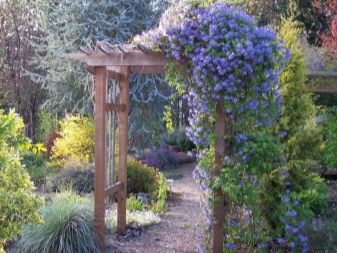
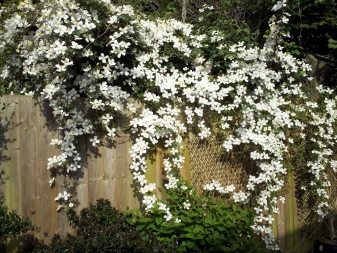
Varieties
The Moscow region cannot boast of a mild and warm climate, which means that any plant planted here must be frost-resistant. We suggest you familiarize yourself with the description of the most unpretentious clematis varieties that are suitable for planting in this region.
- "Azur Ball" (Azure Ball). Begins flowering in mid-May and ends at the end of July. Flowers of "Azur Bolla" have a pale lilac color, in the middle there is a cluster of yellow stamens; oval petals are slightly pointed to the tips, their total on the inflorescence can be from 20 to 40. The diameter of the flower is up to 17 cm. The plant can reach a height of 2 meters.
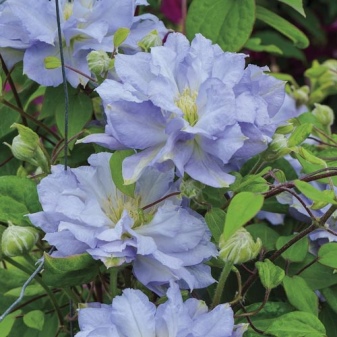
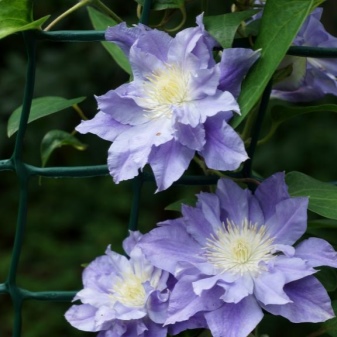
- Allanah. It can grow up to 3 meters in height. Flowers "Allana" are very bright, ruby or maroon. Their diameter varies from 10 to 20 cm. In the center there is a cluster of stamens, light at the roots and dark at the tips.
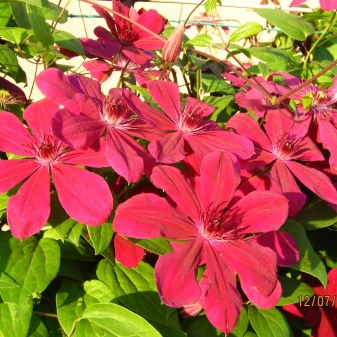
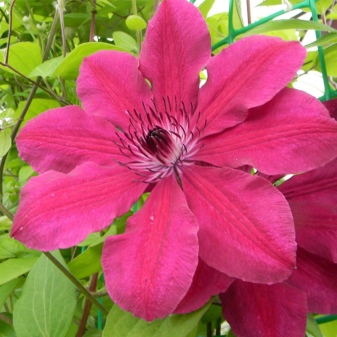
- Akaishi. It has an amazing color of petals - purple-pink, bordered by a delicate lilac color. The stamens of the flower, as in the previous variety, are light at the base and dark at the ends. "Akaishi" grows up to 3 meters in height, it is often used for container planting.
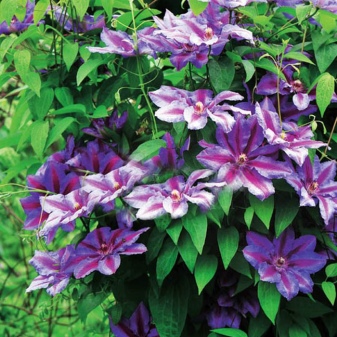
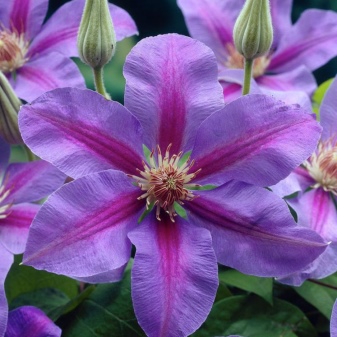
- Anna German. Star-shaped flowers of a delicate lilac color appear twice a year: at the beginning of summer and at the end. In circumference, they reach 15-20 cm.
The variety is good in that it is practically not susceptible to fungal diseases.
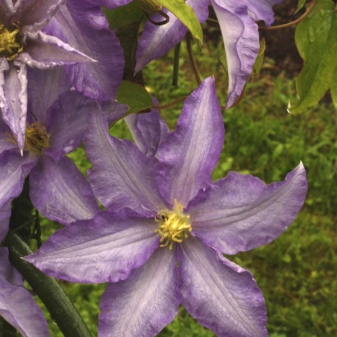
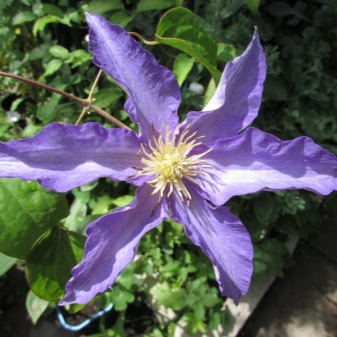
- "Ballerina" (Balerina). It can reach a height of 3 m. It produces flower stalks twice: in June and at the beginning of August. The flowers of "Ballerina" are rather large, their diameter varies from 10 to 15 cm. The petals are snow-white, with a subtle shade of yellowish-green. In the center there is a "basket" of burgundy-yellow stamens.
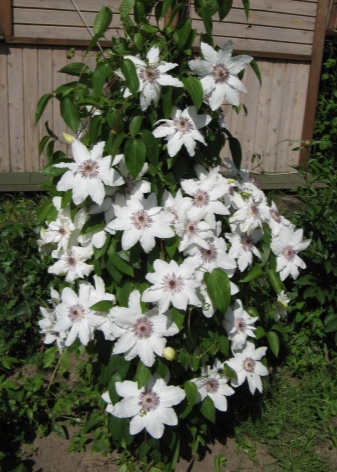

- "Barbara" (Barbara). Another flowering frost-resistant clematis variety. It begins to bloom already in May, and it does it in 2 stages: the first one lasts from May to July, then the flowering begins to decline, and then begins again at the end of July and lasts almost until October. The flowers of "Barbara" are bright pink in color, the petals are slightly corrugated at the edges. The core is dark. Flower circumference - 15 cm. Bush height - 3 m. Prefers shaded places for planting, suitable for container growing.
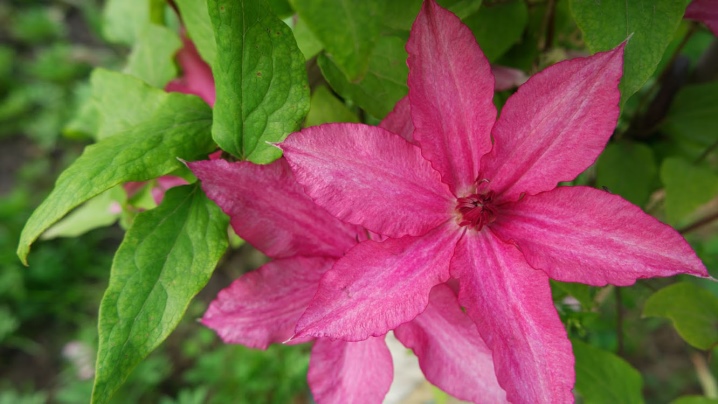
- Betty Corning. It has funnel-shaped flowers, similar to large bells. Their petals are lilac with dark veins, the core is yellow-green, the edges are slightly corrugated. Betty's blooming period is June-September. The variety is unpretentious, it grows even in poor soils. The plant can stretch up to 4 meters in height, it loves to braid various vertical supports: gazebos, decorative trellises, fences, trees, bushes. Can be used as a ground cover.

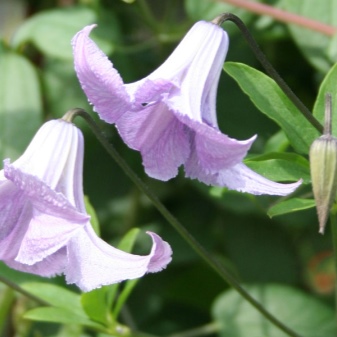
- Duchess of Edinburgh. Charming snow-white flowers with golden centers. The diameter of each of them ranges from 10 to 15 cm. The height of the bush is 3 m. The variety is frost-resistant and grows quickly.
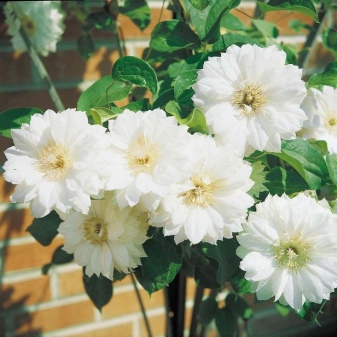
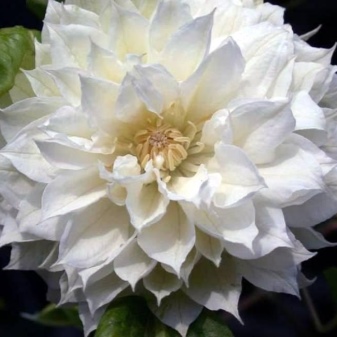
- "Hope" (Nadezhda). The star-shaped flowers of this variety have a bright fuchsia shade, a light pink longitudinal strip runs in the center of each petal, and the core consists of a cluster of light yellow stamens. The diameter of each inflorescence is from 15 cm. In height it can reach 2.5-3 meters. Flowering "Nadezhda" begins in spring and continues almost until frost. Among the clematis recommended for planting in the Moscow region, this one is considered the most preferable, because it is not afraid of frosts and diseases.
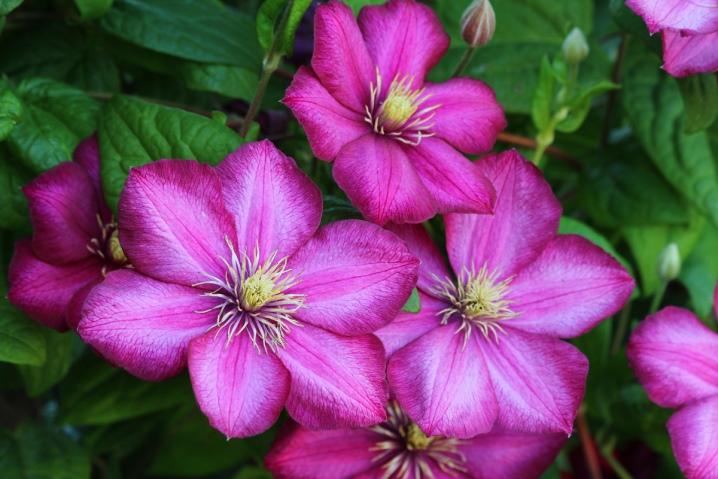
- Nikolai Rubtsov. A beautifully flowering clematis, whose lilac star-shaped flowers stand out brightly against the background of foliage. It can be used as a ground cover or for decorating vertical supports, both artificial and natural.
It reaches a height of 3 meters, the diameter of a flower is 13-15 cm.
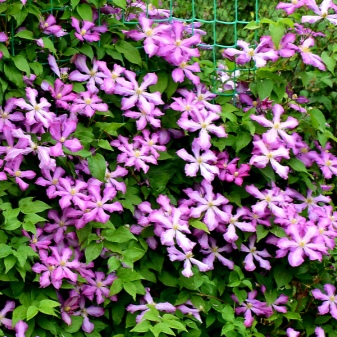

- "Ville de Lyon" (Ville de Lyon). A very interesting flowering plant. It looks like a bush, densely covered with large bright pink flowers with yellow centers. The diameter of each inflorescence is 15 cm. Clematis height is 3-3.5 meters. Ville de Lyon begins to bloom at the end of July and ends in autumn.
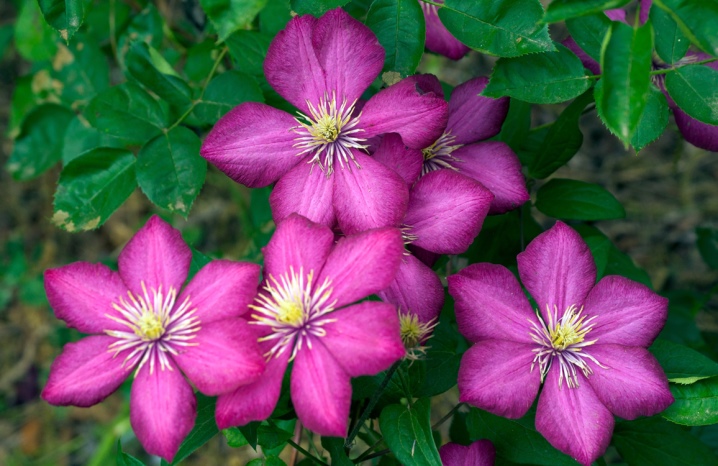
- Frankie. It differs from other varieties of clematis in an interesting flower shape - it looks more like a bell, from which 4 horizontal petals diverge to the sides. The color of "Frankie" is dark lilac, the bell-shaped center is lighter, silvery, inside there are yellow stamens. The plant reaches a height of 2 meters. It can be used as a vine or a ground cover. The first bloom occurs in April and lasts until June. From the middle of summer, the second phase begins, which lasts until autumn.
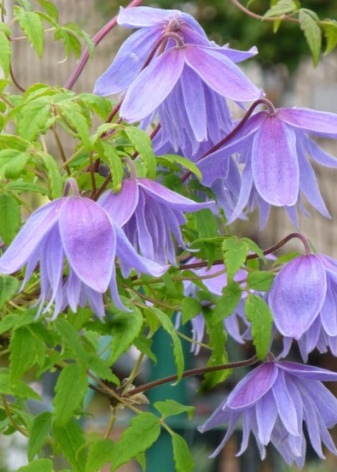
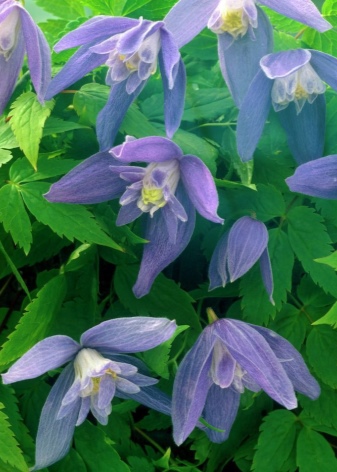
- "Elf" (Elf). A very unusual plant, whose inflorescences really resemble elves in airy skirts. They are fuchsia on the outside and white on the inside. The flowers are small, only about 5 cm in diameter. The bush is covered with them abundantly. The vine reaches a height of 2.5 meters. It begins to bloom in June and ends in November, the peak of flowering is in the middle of summer.
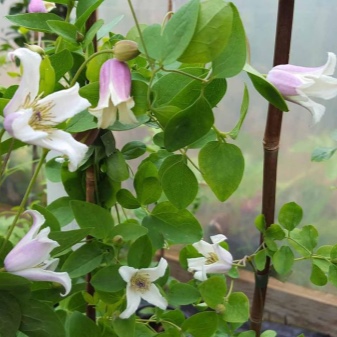
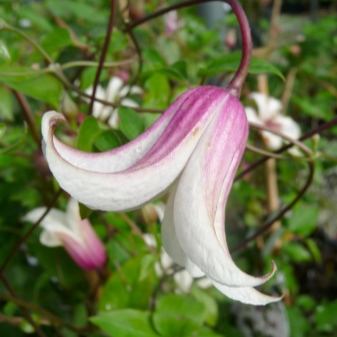
By the way, clematis is one of the few plants whose flowers are practically odorless.
Landing features
Planting clematis in the regions near Moscow is carried out either in the spring, after the night frosts have stopped, or in early autumn.
In order to help clematis take root and grow successfully at the planting site, you need to take into account some of the features of the plant:
- he prefers well-lit places with installed wind protection;
- the soil for clematis should be slightly alkaline or neutral;
- it is impossible to plant the plant in places with closely located groundwater, in swampy and waterlogged areas;
- acidic and salty soils are prohibited;
Peat fertilizers with a high acidity level, as well as fresh manure, are contraindicated for clematis.


Now let's talk about the features of the agricultural technology of this plant.
- After the place where you will plant clematis has been chosen, it is required to prepare special supports with a length of at least 2 m, designed to support the liana-shaped stems. However, remember that clematis do not like to be planted next to the wall of the house or a blank fence. You also need to make sure that rainwater, flowing down from the roof, does not fall on them.
- Dig a hole with dimensions 70x70x70 cm, lay a drainage layer about 10 cm thick on the bottom, fill the hole with earth alternating with peat and sand. Add a couple of glasses of ash and 100-150 grams of mineral fertilizer on top.
- Check the root system of the seedling. If the roots are dry, soak them in water for 2 hours. After that, lower the plant into the previously prepared hole.
- If you are planting multiple plants, keep the spacing between them at least 120 cm.
- The point of growth in young seedlings should be buried by about 6 cm, in more mature ones - by 8. Fill the hole with earth, leaving a small hole in the ground about 20 cm from clematis - you will pour water there so as not to pour it directly onto the roots. The first watering should be especially abundant - pour the liquid until this hole is full.
- Protect from direct sunlight.
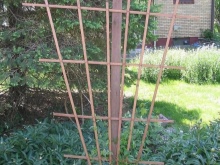
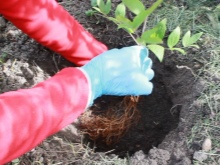
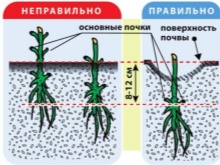
Care
Planting a plant is only half the battle. Then the most interesting thing begins - the carrying out of the care procedures. Let's figure out which of them are needed by clematis.
- It is necessary to water the liana often and abundantly, but an excess of moisture is its worst enemy.If there is a threat of groundwater inflow or the site is located in a lowland where all rainwater flows, lay out the bottom of the planting hole with a drainage from pieces of brick or rubble with a layer at least 25 cm thick.
- In the first year of life of clematis in the open field, it is not recommended to fertilize it strongly. Further, when the vine grows, it will need to be fed with mixtures containing nitrogen; when buds begin to form, potassium will come in handy, when flowering stops - phosphorus. During the summer pruning, do not skimp on mineral fertilizer, diluting it in a proportion of 20 g per 10 liters of water. Spring is the time for watering with the so-called milk of lime (chalk + dolomite flour). When clematis blooms, stop feeding.
- A rainy summer is a reason to use wood ash.
It is poured over the trunk circle to prevent the rotting of the clematis roots.
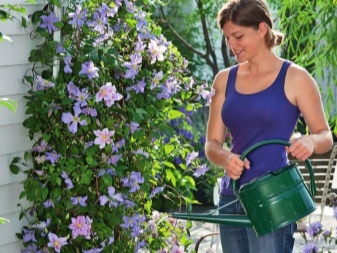
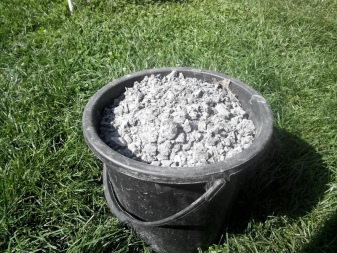
Preparing for winter
In order for the plant not to freeze in winter, it must be prepared for it by doing the following manipulations:
- spud the soil about 15 cm in height and add compost, humus or wood ash there;
- cover the root collar;
- remove the vines from the supports and spread them on the ground;
- as the onset of stable temperatures below zero, cover the shoots with spruce paws, fallen leaves, sawdust, and on top install a box made of wood or plywood with holes made for air circulation;
- you can remove the covering materials in the spring, when the threat of the return of frosts recedes;
- if you did everything correctly, but clematis is still frozen, do not rush to dig it up and destroy it - new shoots may appear on the roots, and the plant will survive.
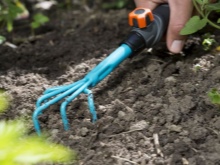
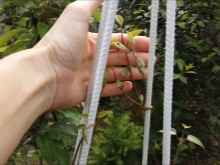
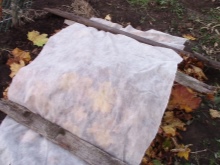
Reproduction
There are several breeding methods for clematis. Let's consider each of them.
- Division. We take a bush no older than 7 years old, dig it out, clean the roots of earth clods. Then we cut into several parts with a knife or garden shears, bearing in mind that each of them should have buds on the root collar.

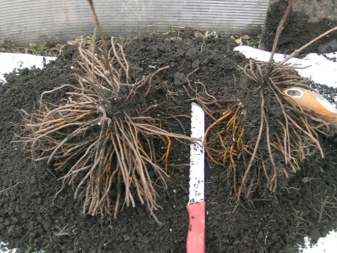
- Layers. In autumn, in October, we take viable shoots of clematis, remove foliage and wilted flowers from them, leaving only a bud. Further, these shoots are tied into a bundle and placed in specially prepared ditches on a peat "pillow". It perfectly accumulates and retains moisture, and is also breathable. We cover it with another peat layer, tamp the soil and insulate it with leaves, needles or branches. In the spring-summer period, we pay special attention to watering the shoots. As sprouts appear, we use mulch - moss, peat, humus. In September, young growth can be transplanted.
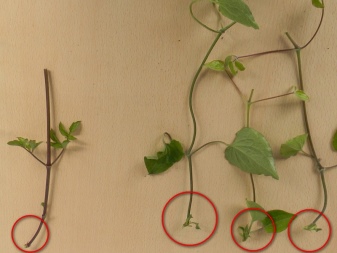
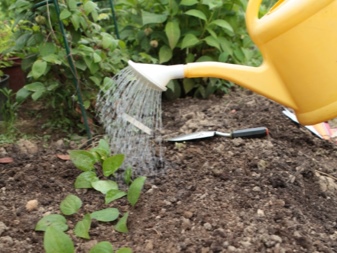
- Pinning. You should take flower pots, fill them with a mixture of soil and peat, dig them into the ground next to the plant from which you want to shoot, and pin each vine in the place of the knot into this prepared container. Remember: you need to dig in the pots so that they are underground, so that the water does not spread during watering. When the pinned shoot grows, it will be necessary to add soil to the container, pouring it with a slide.
If all procedures are carried out correctly, young seedlings will appear by the end of August.
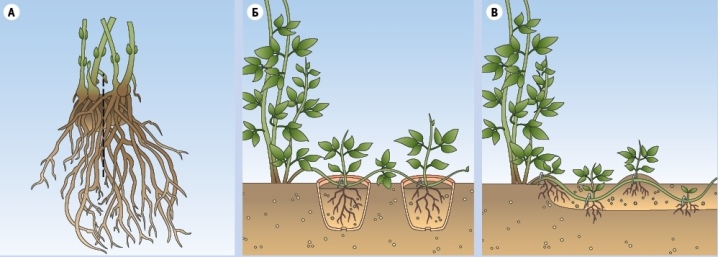
- Cuttings. You will need to mix leaf humus and coarse sand, after which you can prepare the cuttings. For this, an escape is taken, or rather, its central part, where the node is located. Measure about 5 cm below the internode and make a cut; you can leave a little less on top. Dip the lower part in any preparation to stimulate root formation.
Next, each resulting cutting will need to be planted in a personal mini-greenhouse, which can be made from a plastic bottle, and put in a slightly shaded place. It is easy to care for the sprouts: they will need to be periodically sprayed and watered once a week.
Cuttings can winter in their mini-greenhouses, pre-covered with fallen leaves, spruce paws and cardboard boxes... At the end of spring, you will see excellent young growth, ready to plant.
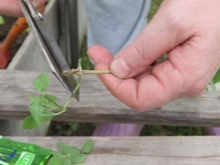
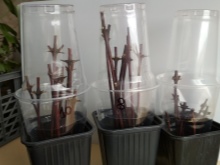

Diseases and pests
Like any other plant, clematis can get sick or be attacked by harmful insects. Let's look at common problems and how to deal with them.
Diseases
- Rust... It initially appears as an orange spot on foliage. If you do not start treatment on time, it will turn brown, dry out and fall off. Control methods: treatment with "Topaz", "Gamair", Bordeaux liquid (1%), removal of infected shoots, weeding out.
- Gray rot... Visually looks like brownish-gray "fluffy" spots. In the absence of treatment, leaves and shoots begin to die off. Ways of struggle: treatment with "Fundazol", "Gamair", "Azozena" solution (2%). Also, monitor the level of soil moisture, do not allow excess moisture.
- Powdery mildew... A well-known disease that affects the whole plant - it becomes, as it were, sprinkled with flour, and then dries and dies. Control method: treatment with the preparations "Fitosporin-M", "Topaz", "Chistotsvet", as well as folk remedies - cow's milk diluted with water, or a solution of hay dust.
- Wilt. Fungal disease. The fungus penetrates through microcracks on the stem, roots, after which the vascular system of the plant is blocked. The tissues cease to be supplied with oxygen, clematis withers, dries up and dies. How to fight: apply a solution of copper sulfate (1%) in spring and autumn, and in summer use the drug "Trichodermin" (twice a season, interval - 2 weeks).
Follow the rules for planting clematis, do not abuse nitrogen-containing fertilizers, provide sufficient insolation.
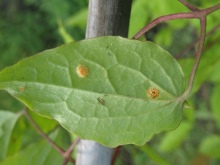
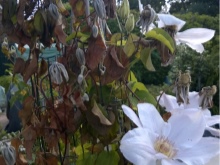
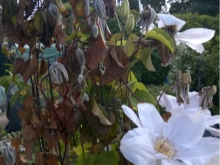
Pests
- Aphids, spider mites, caterpillars. Destroyed by the use of universal garden insecticidal preparations.
- Snails, slugs... They will have to be collected by hand.
- Vole mice. Will save baiting with poisonous baits.
- Gall nematode. The main enemy of clematis. It is recommended to plant next to tagetes, coriander, dill, mulching with wormwood or mint leaves. Ammonia-containing preparations will also help.
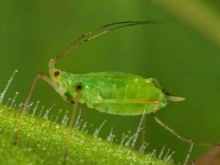
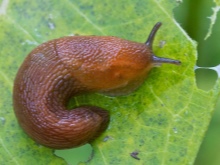
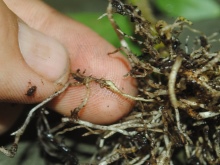
Examples in landscape design
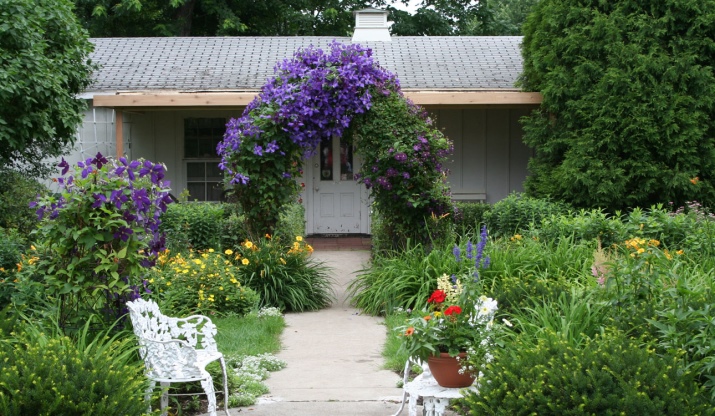
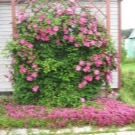

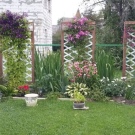

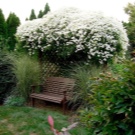
For an overview of clematis in a garden in the east of the Moscow region, see the following video.







































































































Are there varieties of clematis with blue flowers that can be grown in the Moscow region?
Rhapsody is pure blue.I grows without problems in the south-west of the Moscow region.
The comment was sent successfully.